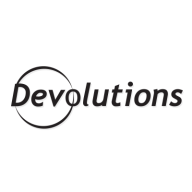

Microsoft Intune and Devolutions Remote Desktop Manager compete in IT management solutions, excelling in mobile device management and remote connection capabilities respectively. Intune holds an advantage in security integration with Microsoft 365, while Remote Desktop Manager offers superior remote management features.
Features: Intune integrates seamlessly with Microsoft 365, offering advanced mobile device and application management along with endpoint security. Remote Desktop Manager excels in secure access to remote connections, credential management, and extensive customization options.
Room for Improvement: Intune requires enhancements in supporting policies for diverse devices and improving Android policy diversity. Expanding reporting capabilities could also be beneficial. Remote Desktop Manager could improve its user interface, enhance integration with additional third-party applications, and streamline resource management features.
Ease of Deployment and Customer Service: Intune facilitates straightforward deployment through the Azure portal, perfect for existing Microsoft environments, leveraging Microsoft's robust support infrastructure. Remote Desktop Manager supports both cloud and on-premises deployment, offering personalized support through its community, catering to diverse IT environments.
Pricing and ROI: Intune offers competitive pricing for Microsoft ecosystem users, often resulting in higher ROI through efficient integration. Remote Desktop Manager, though potentially higher in cost, justifies its pricing with extensive remote management capabilities, delivering substantial ROI for organizations prioritizing robust remote access solutions.


Remote Desktop Manager (RDM) centralizes all remote connections on a single, secure platform that can be shared across the entire team. With support for hundreds of integrated technologies—including multiple protocols and VPNs—RDM provides a comprehensive solution for managing remote access. It also features enterprise-grade password management tools, detailed access controls, and mobile apps that complement its desktop clients for Windows and Mac, and Linux.
RDM is designed to empower IT departments by enhancing security, speed, and productivity across the organization. By streamlining remote access management, it helps reduce inefficiencies, lower costs, and minimize risks, making it an essential tool for today’s IT environments.
Microsoft Intune provides centralized management of mobile devices and applications, ensuring security, compliance, and productivity through integration with Microsoft services like Microsoft 365 and Azure Active Directory.
Organizations use Intune for managing mobile devices and applications, enhancing security and compliance across platforms. With features like single sign-on, conditional access, and zero-touch deployment via Autopilot, it facilitates efficient operations. Intune's scalability, easy enrollment, and capabilities such as remote wipe support diverse device management, offering robust data protection and efficient operation. Despite its features, improvement areas include reporting, compatibility with non-Microsoft devices, and better support for macOS and Linux devices.
What are the key features of Microsoft Intune?
What benefits should users look for in reviews?
In industries such as finance, healthcare, and education, Microsoft Intune is implemented to ensure secure and compliant device management. Companies leverage its capabilities to deploy security policies and manage both corporate-owned and BYOD environments, facilitating a unified approach to data protection and compliance.
We monitor all Remote Access reviews to prevent fraudulent reviews and keep review quality high. We do not post reviews by company employees or direct competitors. We validate each review for authenticity via cross-reference with LinkedIn, and personal follow-up with the reviewer when necessary.